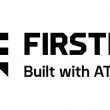Ethertronics antennas featured in new DriveCam product
DriveCam’s newest video solution will feature integrated, high-performance antennas from Ethertronics, allowing DriveCam’s windshield-mounted video-event recorder to be smaller and more durable.
With the DriveCam driver risk management solution, video, audio and vehicular-sensor information are recorded automatically whenever there is a vehicular “event,” such as an accident, said Peter Ellegard, vice president of hardware and firmware engineering for DriveCam. The event recording includes a 10-second buffer before the event to give reviewers context of the situation surrounding the event, he said. This data is uploaded wirelessly to a review center, which forwards relevant information to the driver’s supervisor — for instance, a manager in the case of fleet driver.
The initial version of the DriveCam featured “bunny-eared” external antennas, but drivers who believed the service to be intrusive could break them, Ellegard said.
“It wasn’t particularly pretty, and they were prone to be broken off by certain drivers,” he said.
However, the Ethertronics alternatives let DriveCam embed the antennas — a 0.18-cubic-inch quad-band antenna that enables transmissions over GSM 850, GSM 800, DCS and PCS bands, and a 0.1-cubic-inch miniature diversity antenna that leverages the GPS and CDMA bands.
“We find that we are able to provide a higher level of performance in a smaller form factor than you’ll find in many other solutions out there,” said Jeffrey Crosby, president and CEO of Ethertronics. “We can put our antennas in closer to other components in a device, so that makes it easier for the industrial designers.”
In a pilot program with American Family Insurance, the insurance company has given DriveCams to teen drivers, and the video events are used to coach drivers, Ellegard said.
“Compared to the control group that did not have DriveCams, we had 75% fewer incidents and 75% less money spent on claims,” he said. “[American Family is] starting to provide incentives to get them to take it, because the business case is so good.”
Similar results can be realized by enterprises with fleet drivers, Ellegard said. While the DriveCam primarily is a training device, the information recorded can exonerate drivers — and their companies — when unfortunate events occur, he said.
Prior to installing DriveCam, a limousine company in New York paid a $1 million settlement after a company car struck a pedestrian, Ellegard said. During the first four months with DriveCam, the limousine company had two other cases of pedestrians being hit by the company’s vehicles, but the company did not have to make any settlement payments, he said.
“We could document that there was nothing the driver could do — in both cases, the driver had the right of way, and the pedestrians were literally running out in front of the vehicle,” Ellegard said. “They had perfect evidence that it was not the drivers’ fault.”
Such stories can help an enterprise overcome resistance from employees who believe DriveCam represents a “Big Brother” intrusion into their workplace, Ellegard said.
“It truly is to [the employees’] benefit,” he said, “because as you become a better driver, the chance of DriveCam exonerating them from an accident is actually quite high. Of course, it also works the other way — it will document when you make a mistake.”

















